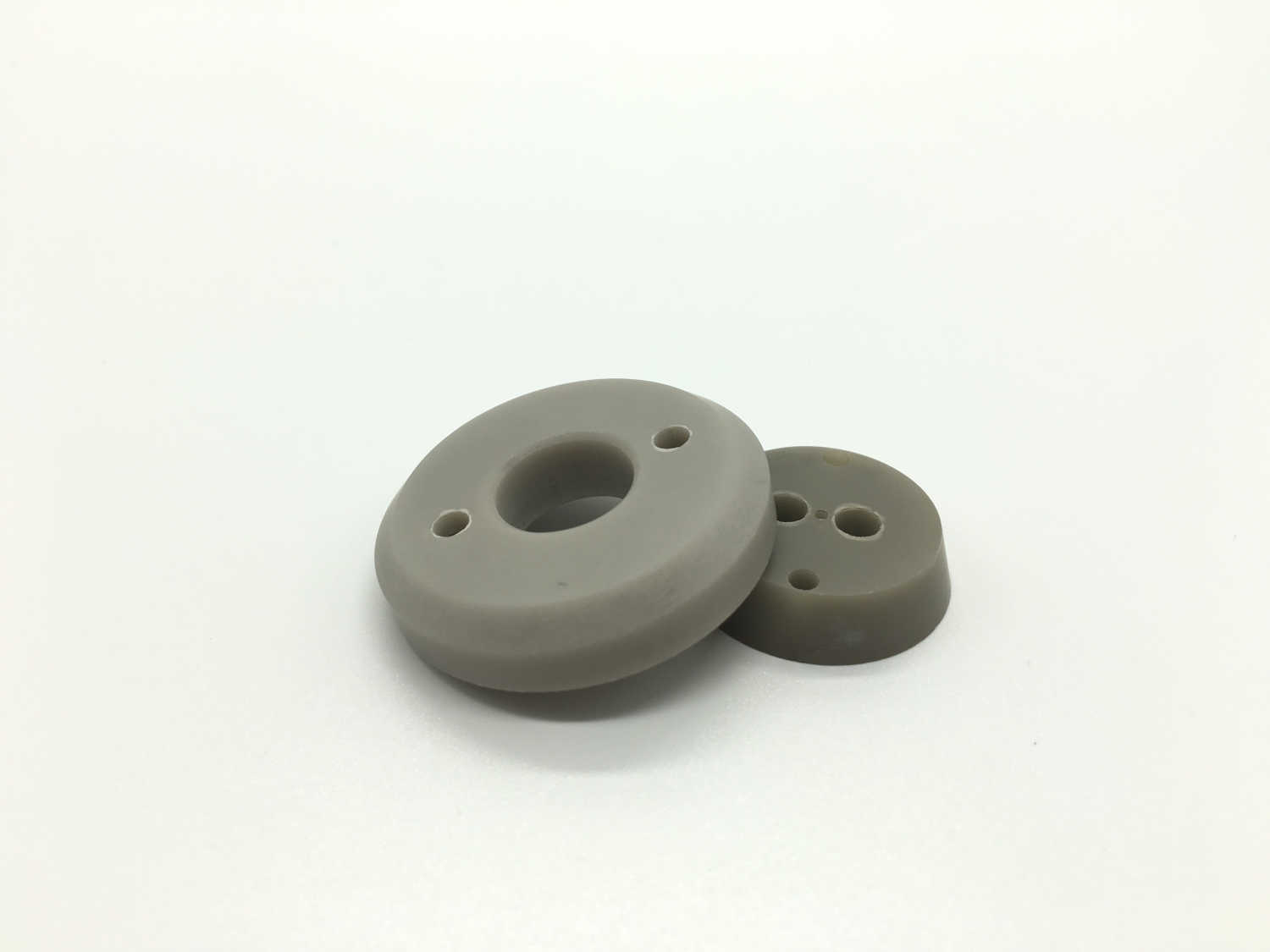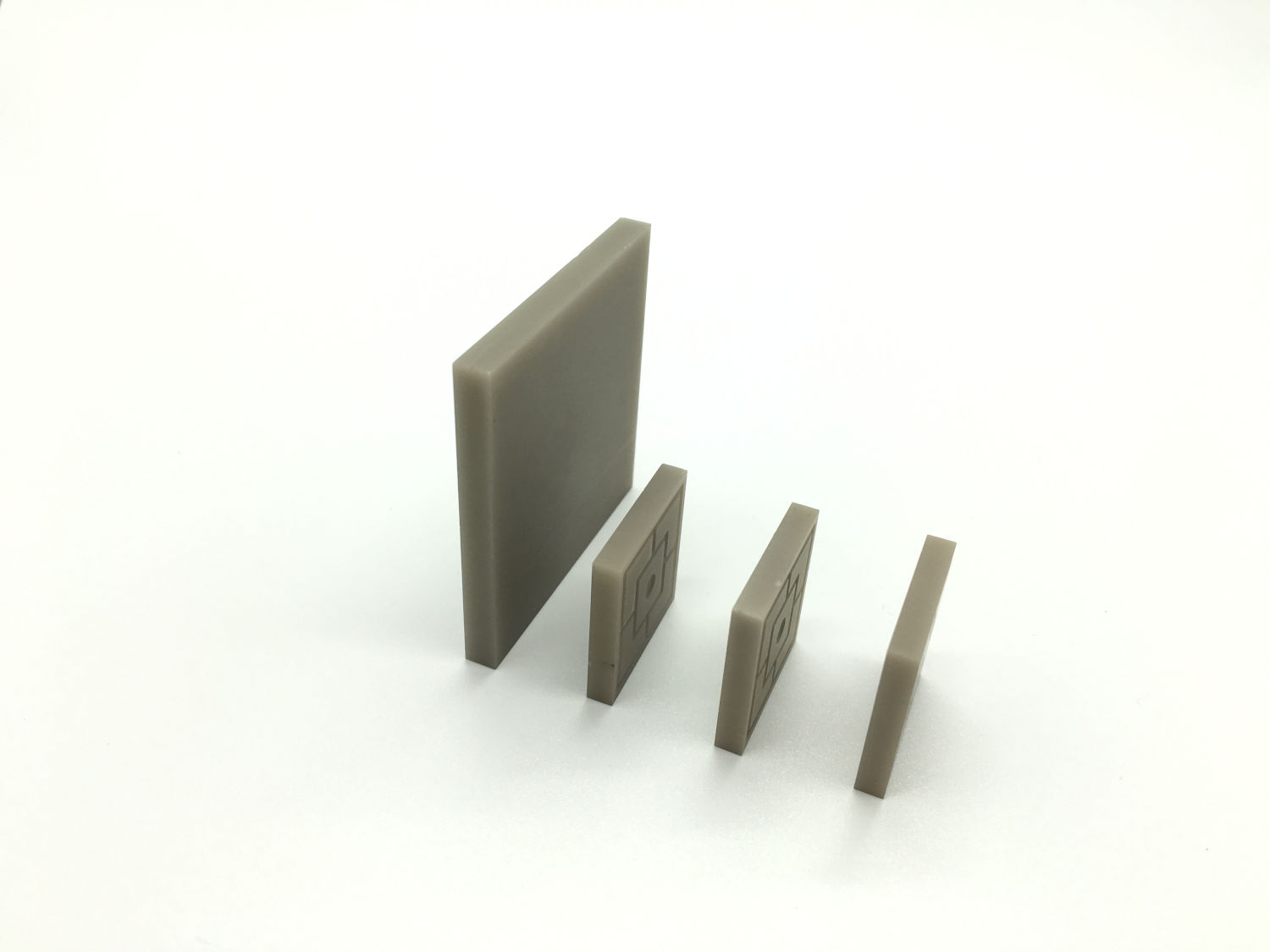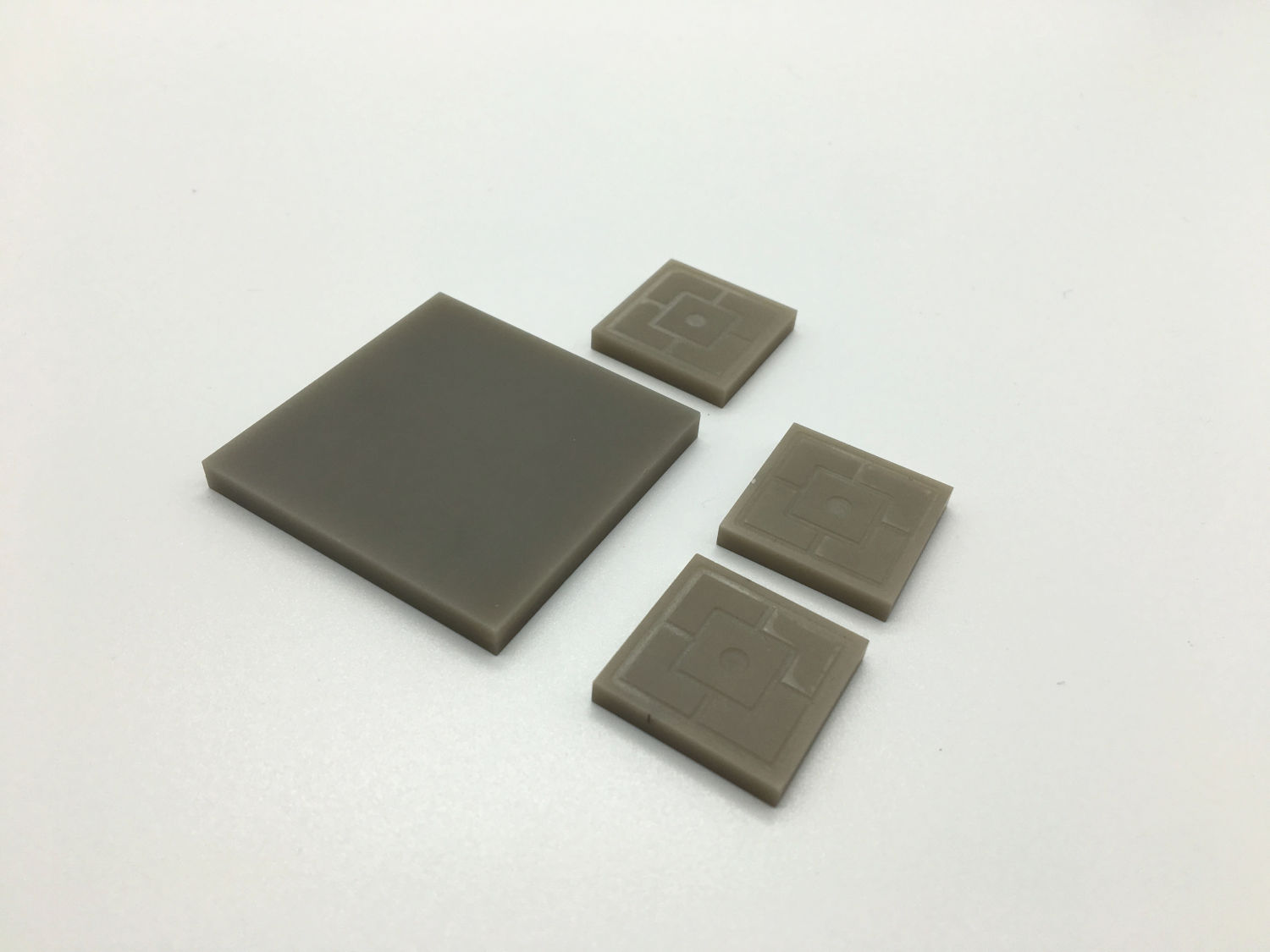Aluminum Nitride (AlN)
Aluminum nitride ceramic has “extreme” high thermal conductivity, corrosion resistance and low dielectric loss. The coefficient of thermal expansion is close to that of silicon. As a new generation of ceramic materials, the aluminum nitride substrate has good compatibility with circuit materials. It can be used for multilayer wiring which makes it an ideal material for large-scale integrated circuits, semiconductor module circuits and high-power devices.
Applications
- LED solid-state lighting, high-frequency microwave devices, and communication modules;
- Inverters for photovoltaic cells, wind energy generators and new energy vehicles;
- Smelting non-ferrous metal crucibles, evaporation dishes, and magnetic fluid power generation devices;
- High-temperature flattening machine corrosion-resistant parts.
Advantages
- “Extreme” high thermal conductivity
The thermal conductivity of aluminum nitride ceramic is the highest in all ceramic materials; similar to aluminum and more than 6 times higher than Alumina.
- High electrical insulation capacity
Aluminum nitride ceramic has good insulation, low dielectric loss characteristic. Its thermal expansion is close to that of silicon.
- Dense and No toxicity
The aluminum nitride is non toxic and is considered to replace the Beryllium oxide (BeO) in the semiconductor application and substrates.
Technical Characteristics – Aluminum Nitride (AlN)
| AlN | |
| Density(g/cm3) | >3.3 |
| Porosity(%) | 0 |
| Surface roughness (μm) | 0.3~0.6 |
| Warpage(‰) | <2 |
| Elastic Modulus(GPa) | 320 |
| Bending strength(MPa) | ≥450 |
| Thermal expansion(10-6/K) | 2.2~3.6 |
| Thermal conductivity room(W/m•K) | ≥170 |
| Max. use temperature(℃) | 800*(Air) 1300(inert) |
| Volume resistivity (Ω·cm) | ≥1000 |
| Dielectric constant 1MHz | 8~10 |
| Dielectric loss 1MHz | 3*10-4 |
| Breakdown strength(Kv/mm) | ≥17 |
Note: Standard dimension AlN substrates available in stock. Please contact us for more information.




